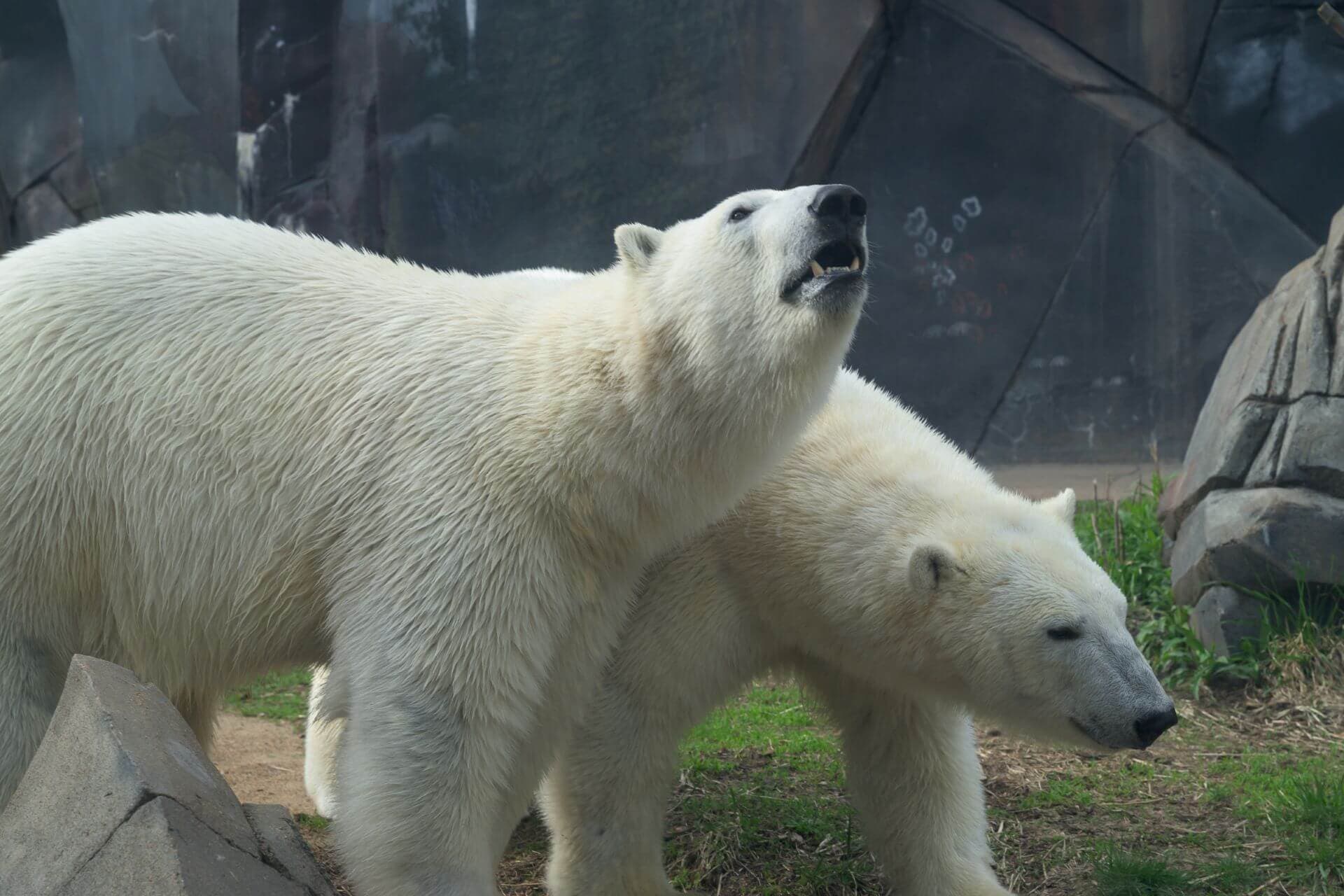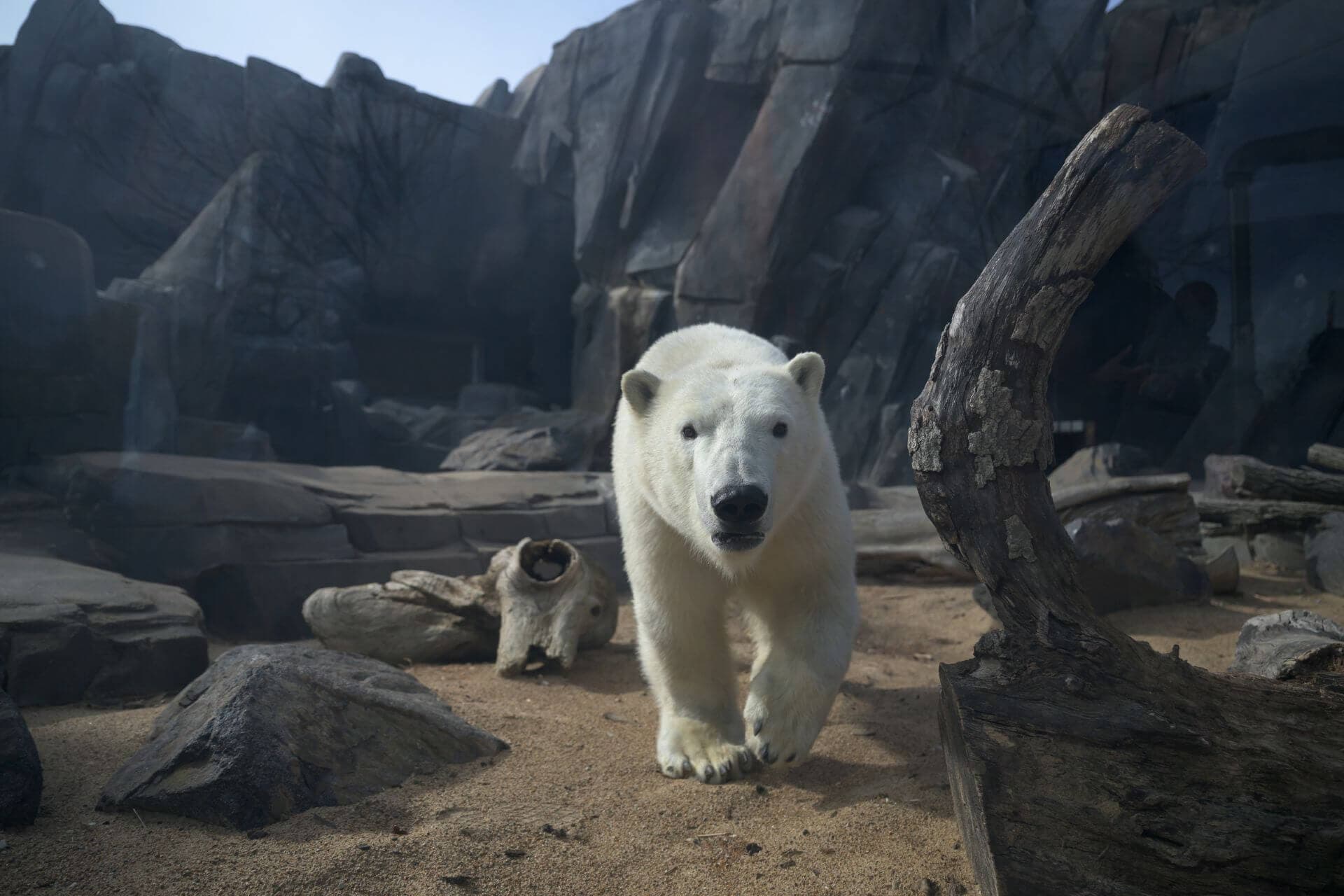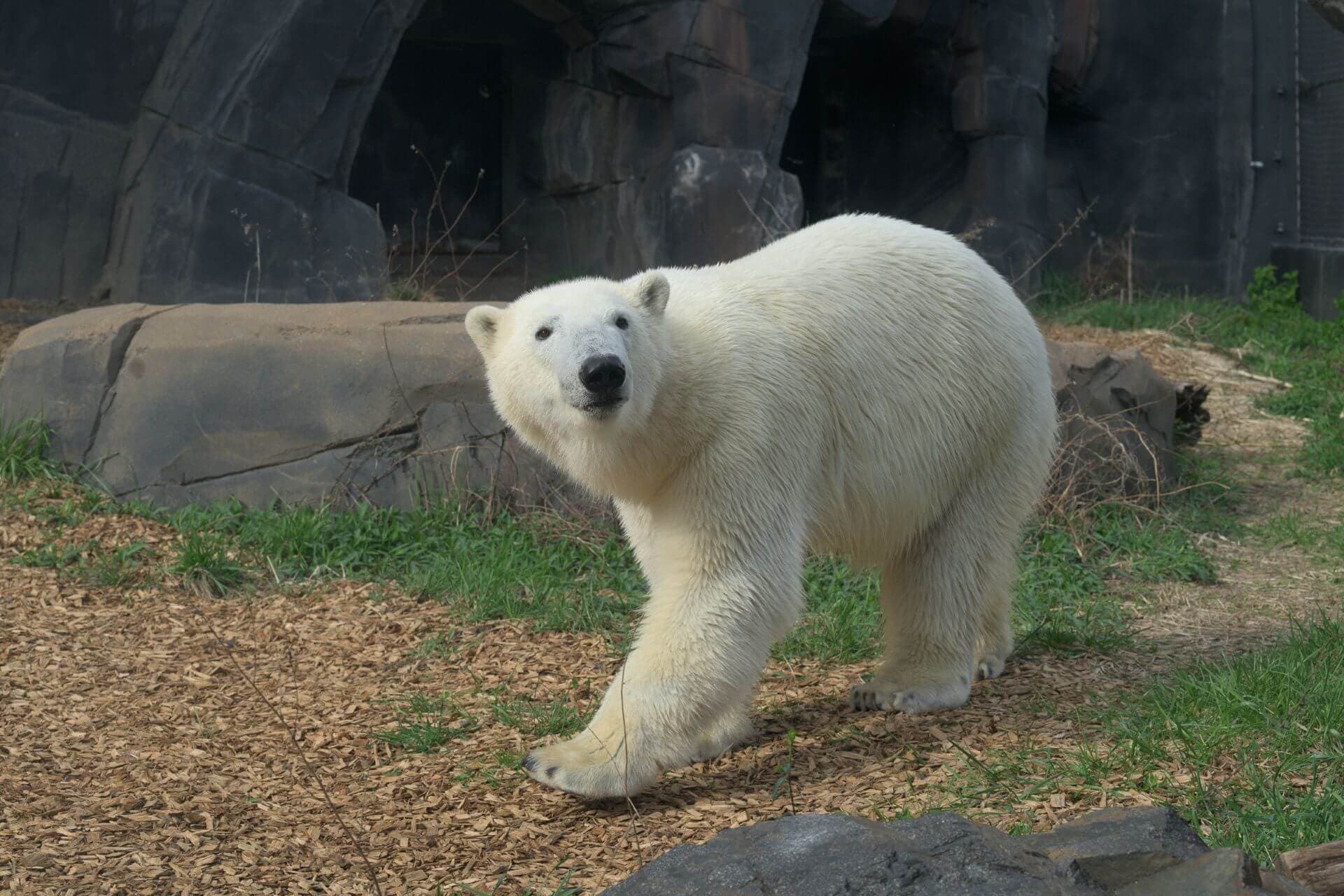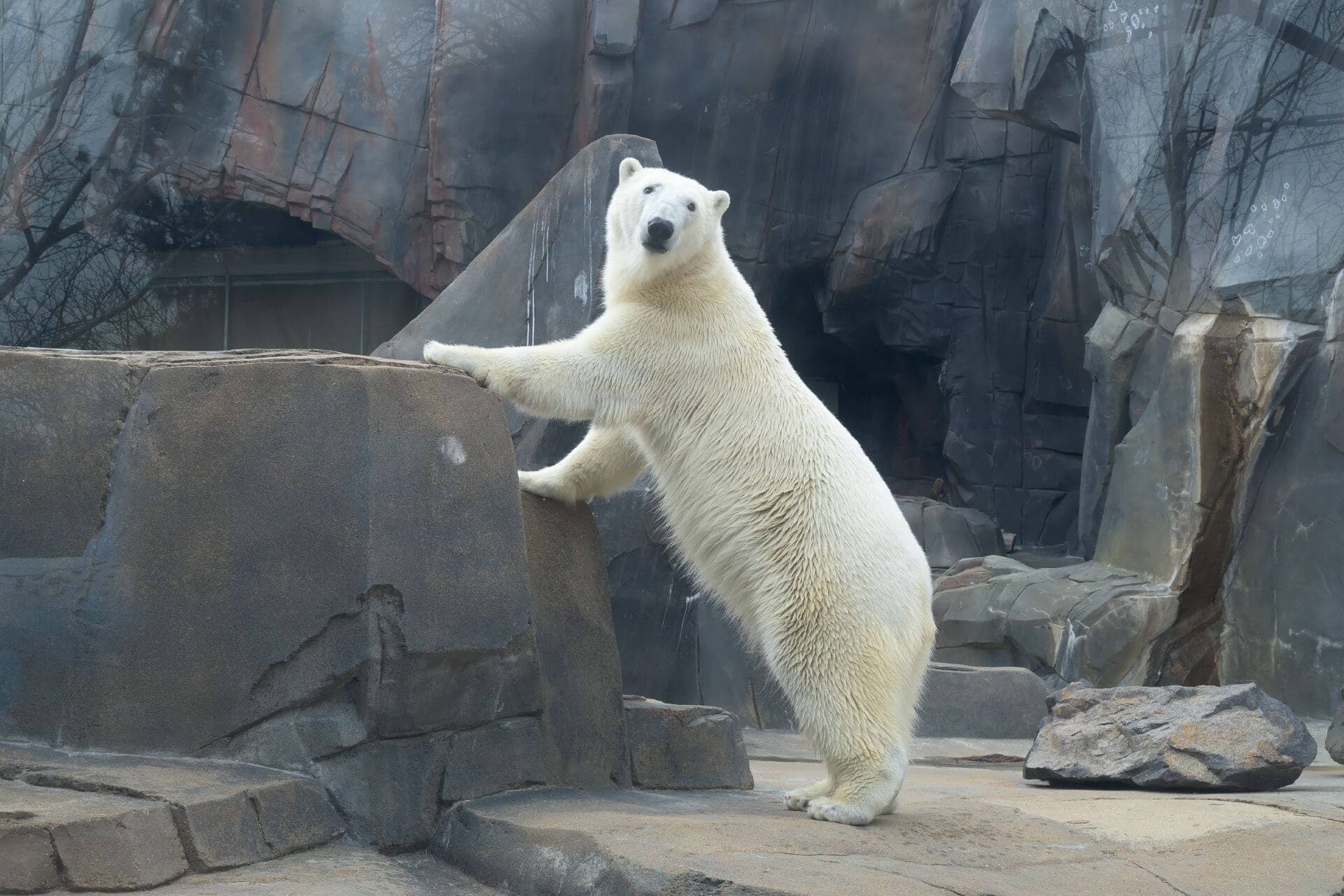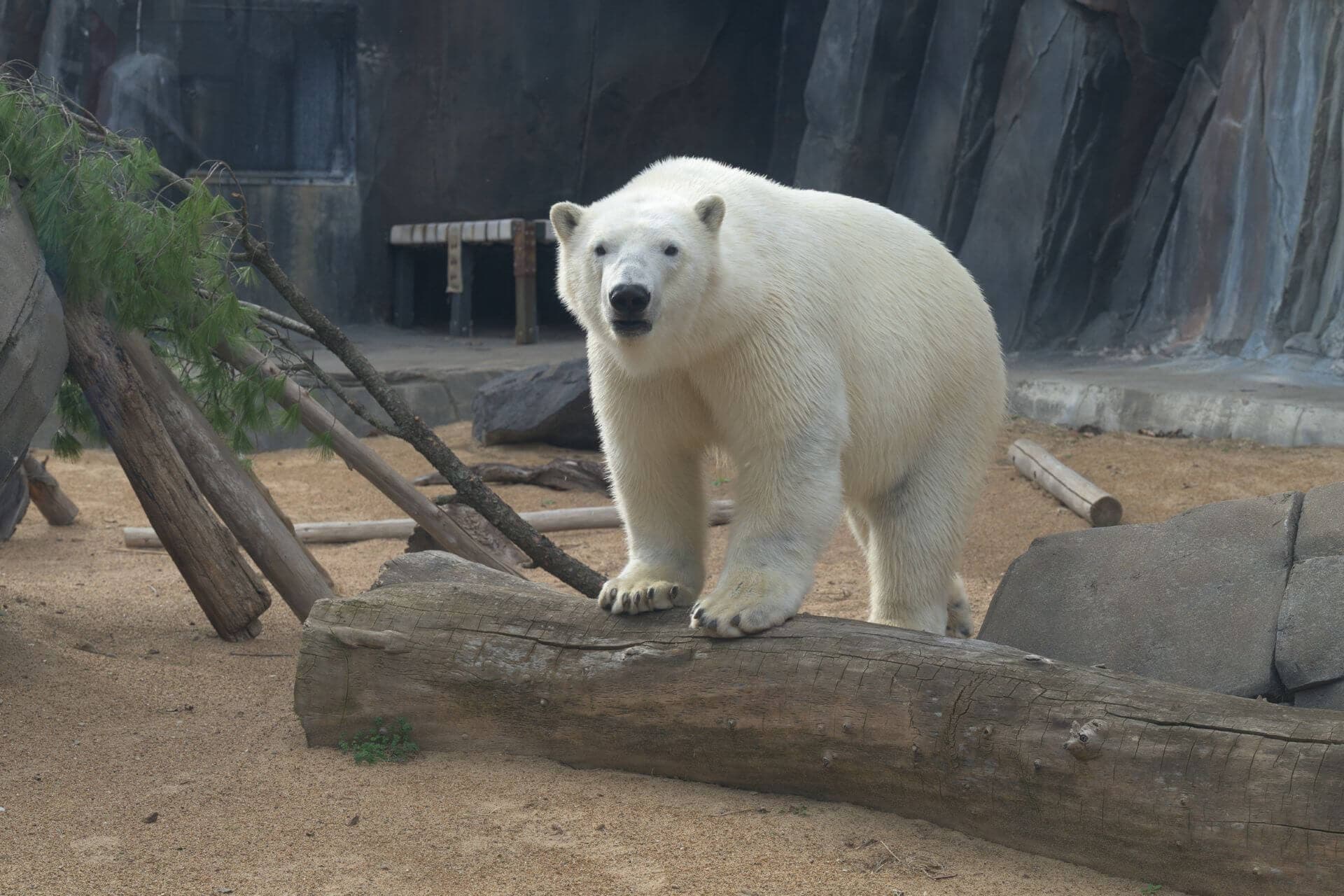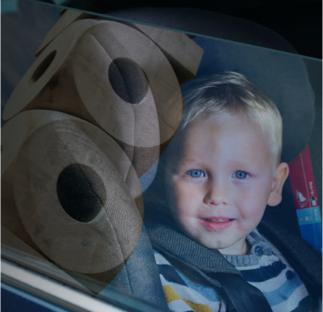Update: Sept. 23, 2025
As part of a new national initiative to advance polar bear conservation, the Saint Louis Zoo announces plans for male polar bear Kallik to move from Saint Louis Zoo to Oregon Zoo in late fall 2025. The move is part of a comprehensive plan by the Polar Bear Population Alliance — a consortium of AZA-accredited zoos and aquariums focused on maintaining a sustainable, genetically diverse polar bear population in the U.S. Guests are encouraged to stop by and see both males at McDonnell Polar Bear Point before Kallik’s departure later this fall.
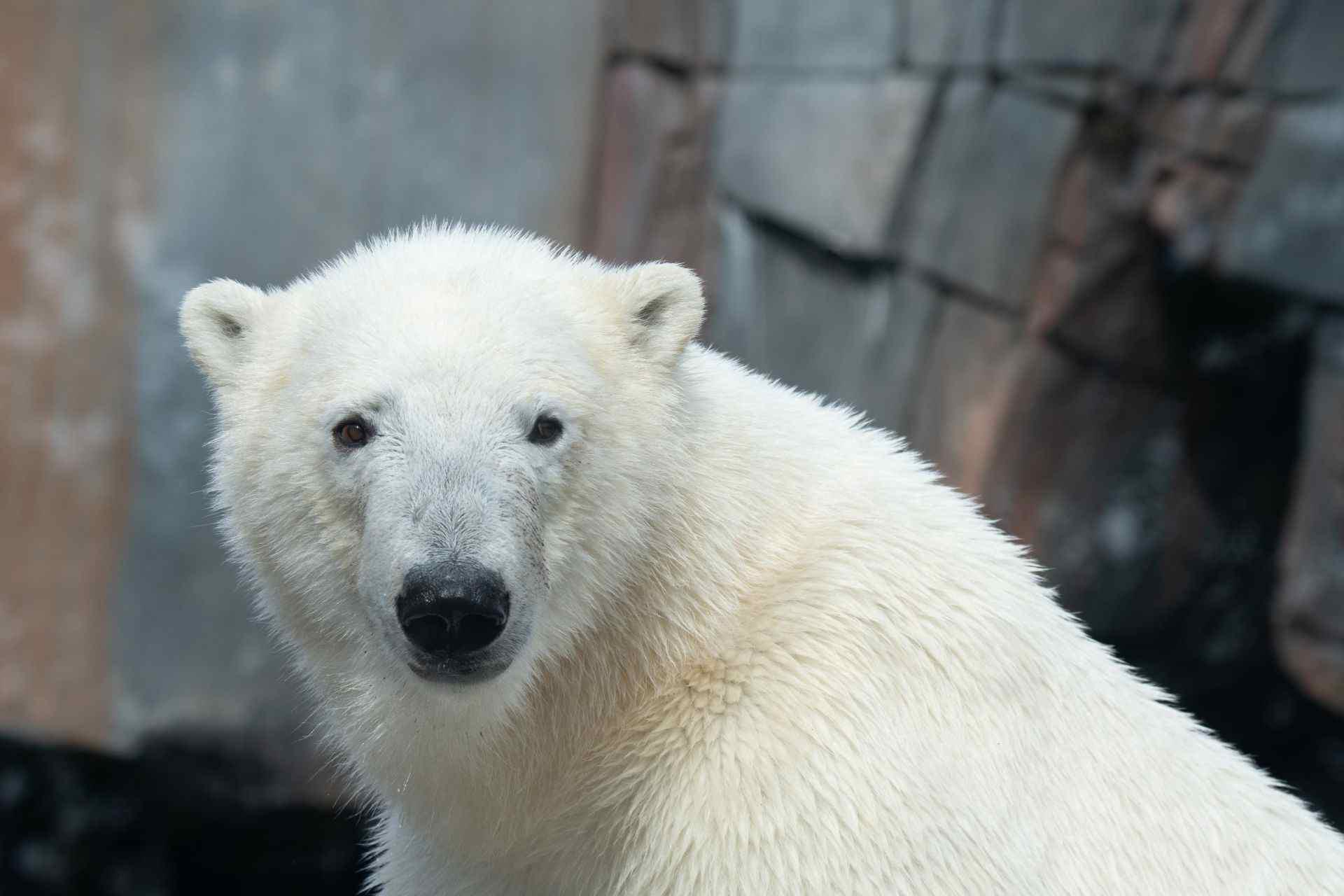
March 25, 2025
An energetic pair of polar bear twins will be on view to the public at the Saint Louis Zoo for the first time on Tuesday, March 25.
Two-year-old twins, Kallu (Kah-LOO) and Kallik (Kah-LEEK), will now have regular access to the Zoo’s 40,000-square-foot polar bear habitat, McDonnell Polar Bear Point. Guests can stop by for a chance to see the playful duo during regular Zoo hours from 9 a.m. to 5 p.m. daily this spring. The bears are exploring at their own pace and can choose between the habitat in view of guests or their private bedroom spaces throughout the day.
The twins were born at Toledo Zoo & Aquarium in November 2022 and arrived at the Saint Louis Zoo earlier this month. The Zoo’s previous resident polar bear, Kali, moved simultaneously to Toledo Zoo where he will be paired with a female based on a breeding recommendation.
The twin brothers are known for their close bond. They love to play and spar together during the day and often sleep side-by-side at night. In Toledo, the twins enjoyed diving into their habitat pool, training with special treats like canned tuna and seaweed and playing with their pool toys.
Kallik is the smaller of the two males at 620 lbs. He is the bolder brother, and very curious –often the first to investigate new enrichment and spaces.
Kallu weighs about 740 lbs. and is very food-motivated during training. He is more cautious and tends to let his brother lead when exploring new things.
Their new home, Polar Bear Point, opened at the Saint Louis Zoo in 2015 and includes two temperature-controlled pools, an upper viewing deck and an arctic cave room that offers up-close, underwater views.
Polar Bear Point also includes a Care Center that is not viewable by the public. This space offers animals privacy and includes four bedroom spaces, a denning area and an outdoor off-exhibit habitat.
For more information, visit stlzoo.org/polarbear.
Polar bear conservation
Polar bears (Ursus maritimus) are listed as threatened under the Endangered Species Act. The species faces a significant risk of population decline caused by loss of sea ice from climate change.
The Saint Louis Zoo is committed to safeguarding this species through collaborative breeding programs, research, public education and conservation initiatives in the Arctic.
In 2024, the Zoo launched the Saint Louis Zoo WildCare Institute Center for Polar Bear Conservation, a dynamic conservation program focused on protecting the species, funding research and collaborating with Arctic communities.
